
The internet we navigate today has come a long way since its clunky, text-only beginnings. Remember dial-up? Remember GeoCities? Web 1.0 was a quaint starting point, but we’ve progressed to the dynamic, social sphere of Web 2.0. Think Facebook, YouTube, the constant buzz of online interaction. However, there’s a looming issue in this seemingly empowered digital landscape: centralization. Giant corporations hold the reins, controlling our data, content, and the very services we use. Their priorities, let’s be honest, don’t always align with ours.
This is where Web 3.0 enters the scene, not as a fad, but as a potential revolution. We’re talking about reclaiming digital sovereignty, shifting power from the few to the many. Imagine an internet where you, not Zuckerberg, controls your data; where artists reap the rewards of their creations, not streaming platforms.
The Foundation of Web3 and Decentralization

Forget the clunky dial-up days of Web 1.0 and the social media whirlwind of Web 2.0. We’re on the cusp of something entirely new: Web3. It’s not just another tech buzzword, but a paradigm shift promising an internet free from centralized control. Imagine an ecosystem where users, not corporations, call the shots. That’s the core of the Web3 ecosystem – decentralization, interoperability, and finally, your data, your rules. This isn’t some utopian fantasy. For a deeper dive into the evolution of web, this article explores the transformative journey from Web 1.0 to Web 3.0.
The third generation leverages decentralized technologies creating open, distributed networks that break the stranglehold of tech giants. Think of it as a bustling open-air market instead of a walled garden controlled by a few. But it’s not just about breaking free. Web3 is about connection. Its interconnected protocols ensure seamless interaction across the digital landscape, no matter the platform. Want to move your social media presence without starting from scratch? The third generation makes it possible.
Scenario 1 – Monetization Through Tokenization
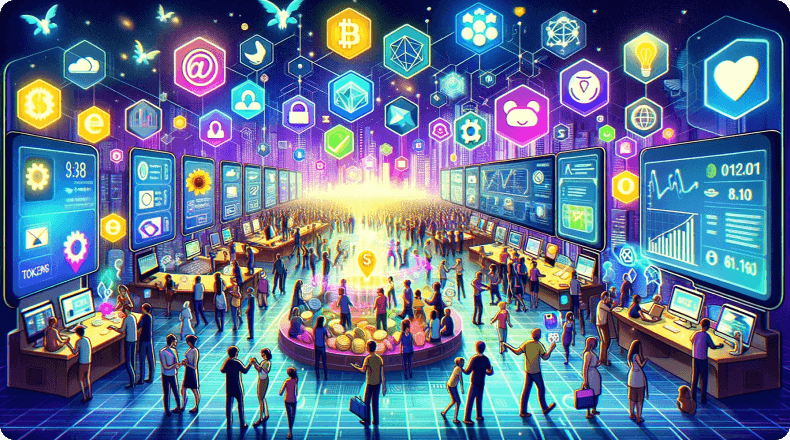
Ditch the dry technical jargon – let’s talk about turning your digital life into gold! Web3 app development and distributed ledger are shaking things up, offering a way to own and capitalize on something we all generate: data and digital assets.
Imagine this: Instead of social media platforms hoarding your data and bombarding you with ads, you get rewarded for your content and attention with cool, tradable tokens. Want exclusive access to that artist’s work? Own a piece of it as a unique digital token! The possibilities are endless:
• Content creators become entrepreneurs, earning directly from their fans without middlemen. Think Patreon on steroids!
• Data providers finally control their valuable information, choosing who gets to use it and getting paid for it.
• Digital art collectors own a piece of history (or a meme?), supporting artists and enjoying exclusive perks.
This isn’t some distant dream – it’s happening right now. The third generation is a movement, not a single solution, and it’s empowering individuals to claim their rightful place in the digital world.
Case Study: Axie Infinity
Axie Infinity is a Web3 game that uses distributed ledger and tokenization to create a distributed gaming experience and economy. Axie Infinity is inspired by games like Pokemon and Tamagotchi, where the players can collect, breed, battle, and trade cute digital creatures called Axies. Axies are represented by NFTs that have different body parts, skills, and attributes. Players can also own and customize their own virtual land, which is also represented by NFTs. Axie Infinity uses its native token, AXS, to reward the players for playing the game and participating in the governance of the platform.
Scenario 2 – Enhancing Privacy and Security
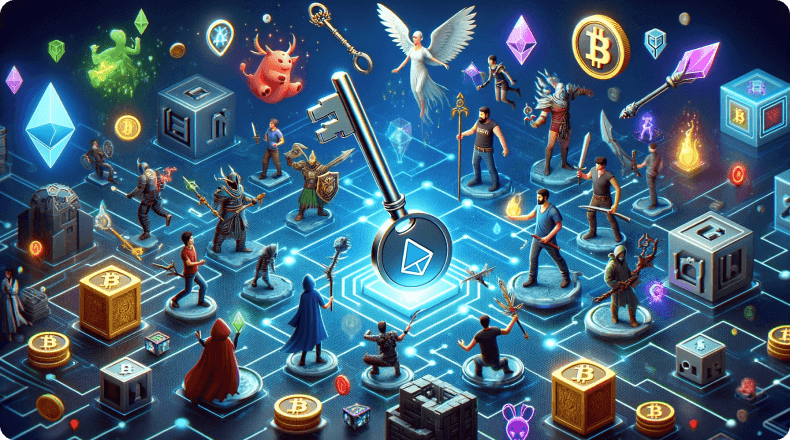
Another important and relevant application of Web 3 development and distributed ledger is the enhancement of privacy and security in digital products. Privacy and security are essential for the users to protect their data and identity from unauthorized access and misuse, as well as from censorship and manipulation. Privacy and security are also crucial for the trust and integrity of the web, as well as for the validity and performance of the transactions and agreements that occur on the web.
Web3 and blockchain can enhance the privacy and security of the users and the web in various ways, such as:
• Encryption and hashing: Encryption and hashing are techniques that transform the data into unreadable and unrecognizable formats, making it impossible or extremely difficult to decipher or tamper with.
• Decentralization and distribution: Decentralization and distribution are principles that distribute the data and the services across multiple nodes that are connected by peer-to-peer protocols, without relying on a single authority or intermediary.
• Distributed ledger and smart contracts: Web3 blockchain and smart contracts are technologies that enable trustless and verifiable transactions and agreements on the web, ensuring transparency and immutability.
Case Study: Brave
Brave is a browser that uses distributed ledger and tokenization to improve the privacy and security of the users, as well as to create a fairer and more rewarding web ecosystem. Brave blocks ads and trackers by default, protecting the users from unwanted and intrusive ads, as well as from data collection and profiling by third parties. Brave also offers a built-in VPN and Tor integration, enhancing the users’ anonymity and access to the web. Brave uses its native token, Basic Attention Token (BAT), to reward the users for viewing ads and the publishers for creating content.
Scenario 3 – Decentralized Gaming Experiences
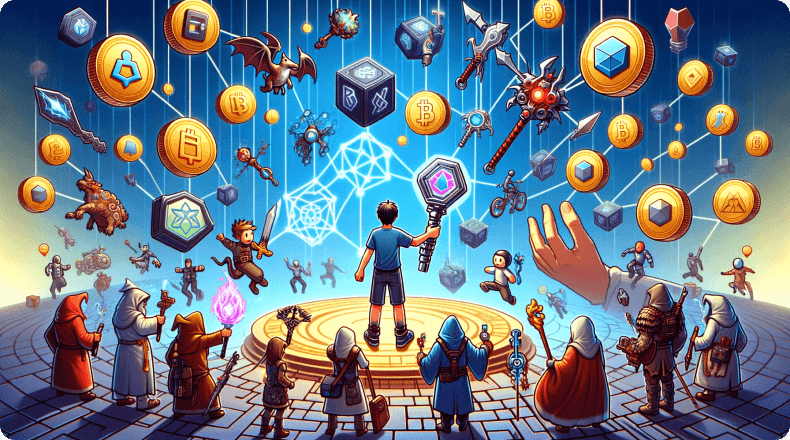
Gaming is one of the most popular and lucrative sectors in the digital world, with millions of players and billions of dollars in revenue. However, gaming is also one of the most centralized and controlled sectors, with game developers and publishers having the ultimate power over the game design, rules, and economy. Players often have little or no ownership or influence over their in-game assets, achievements, and experiences, and are subject to the whims and decisions of the game providers.
Decentralized gaming can provide several benefits for the players, such as:
• True ownership of in-game assets: Distributed gaming can enable the players to own their in-game assets, such as characters, items, skins, and currencies, as non-fungible tokens (NFTs) or fungible tokens (FTs) on the distributed ledger.
• New gaming economies: Decentralized gaming can enable the players to create and participate in new gaming economies, where they can exchange and trade their in-game assets and services with other players, or access and use various features and functions in the game.
• Fair play: Distributed gaming can enable the players to have a more fair and transparent gaming experience, where they can trust the game rules and outcomes, as well as the actions and behaviors of other players.
One example of such innovation in the decentralized gaming world is the blockchain racing game Racer Club, which introduces an exciting blend of racing dynamics and blockchain technology. Through Racer Club, players gain ownership of unique digital assets and participate in new, decentralized economies, highlighting the shift toward a more player-centered gaming model.
Case Study: Decentraland
Decentraland is a game that uses distributed ledger and tokenization to create a distributed virtual world and economy. Decentraland is a metaverse, where the players can explore, create, and socialize in a 3D immersive environment. Decentraland is also a platform, where the players can build and host their own games, applications, and experiences. Decentraland uses its native token, MANA, to reward the players for participating in the game and the platform, as well as to buy and sell land, items, and services in the game.
Scenario 4 – Decentralized Social Media Platforms
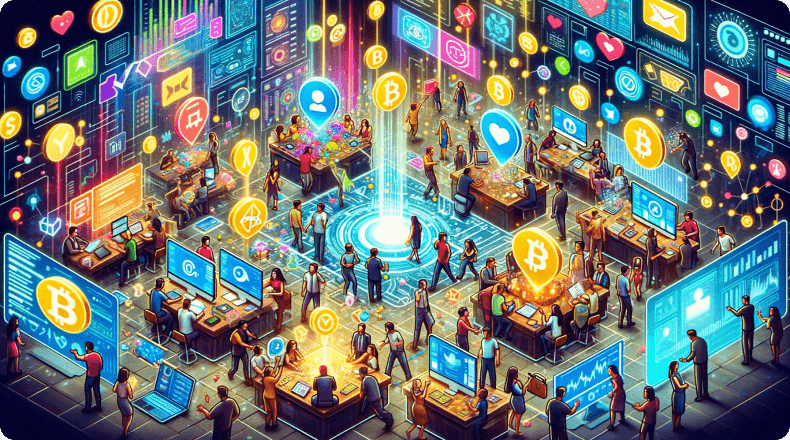
Social media is one of the most influential and pervasive phenomena in the modern world, with billions of users and trillions of interactions. However, social media is also one of the most problematic and controversial phenomena, with issues such as data privacy, content moderation, platform bias, and misinformation. Most social media platforms are centralized and controlled by a few corporations that have the power to decide what content and data are allowed or not, as well as to monetize and manipulate the users and the information.
Decentralized social media platforms can provide several benefits for the users, such as:
• User governance: Distributed social media platforms can enable the users to have a say and a stake in how the platform operates and evolves. The users can vote and influence the rules and policies of the platform, as well as the features and functions that are added or removed.
• Ad-free experiences: Distributed social media platforms can enable the users to have ad-free and spam-free experiences, as well as to avoid unwanted and intrusive ads and trackers.
• Content authenticity: Distributed social media platforms can enable the users to have more authentic and trustworthy content and information, as well as to verify and validate the sources and the quality of the content and information.
Case Study: Steemit
Steemit is a social media platform that uses distributed ledger and tokenization to create a distributed blogging and social networking platform. Steemit is powered by the Steem, which is a public and distributed ledger that records and validates every action and transaction that occurs on the platform. Steemit also uses smart contracts to enable the automation and enforcement of the rules and logic of the platform. Steemit uses its native token, STEEM, to reward the users for creating and curating content, as well as to access and use various features and services on the platform.
Challenges and Considerations

While Web3 software development and distributed ledger offer many benefits and opportunities for digital products, they also pose many challenges and considerations for the developers and the users who want to transition to this new paradigm. Some of the main challenges and considerations are:
• Technical complexity: These complex and novel technologies require a high level of technical expertise and knowledge to understand and implement.
• Regulatory challenges: Web3 vs blockchain is a rather famous and controversial confrontation, but from the common disadvantages we can single out regulatory problems. Both are disruptive and innovative technologies that challenge the existing legal and regulatory frameworks and norms.
• User adoption hurdles: These radical and transformative technologies require a significant behavioral and cultural change from the users.
Mitigation Strategies
Despite these challenges and considerations, many companies and projects are successfully transitioning to Web3 and blockchain, or are planning to do so in the near future. Some of the mitigation strategies that these companies and projects are using are:
• Collaboration and education: Many companies and projects are collaborating and educating each other and the users on distributed ledger, as well as on the best practices and the standards of the industry.
• Innovation and experimentation: Many companies and projects are innovating and experimenting with Web3 application development and distributed ledger, as well as with the features and functions that they can offer and use.
• Hybrid and gradual approaches: Many companies and projects are using hybrid and gradual approaches to transition to distributed ledger, rather than adopting a full-fledged and radical change.
Conclusion
In this article, we have explored the shift to Web3 and blockchain, and how they are reshaping digital products in various domains. We have discussed the driving factors, goals, and benefits behind this shift, as well as the challenges and considerations for successful implementation. We have also examined some common scenarios and case studies of how distributed ledger is transforming digital products, such as monetization, privacy, gaming, and social media. They are not just technologies, but also visions and movements that aim to create a more decentralized, user-centric, and transparent web.
For those interested in the gaming sector, understanding how to develop blockchain games effectively, even in challenging market conditions, is crucial. This knowledge can provide developers with the ability to create fresh gaming experiences powered by blockchain technology.
SUMMARIZE THIS PAGE
Contact us






